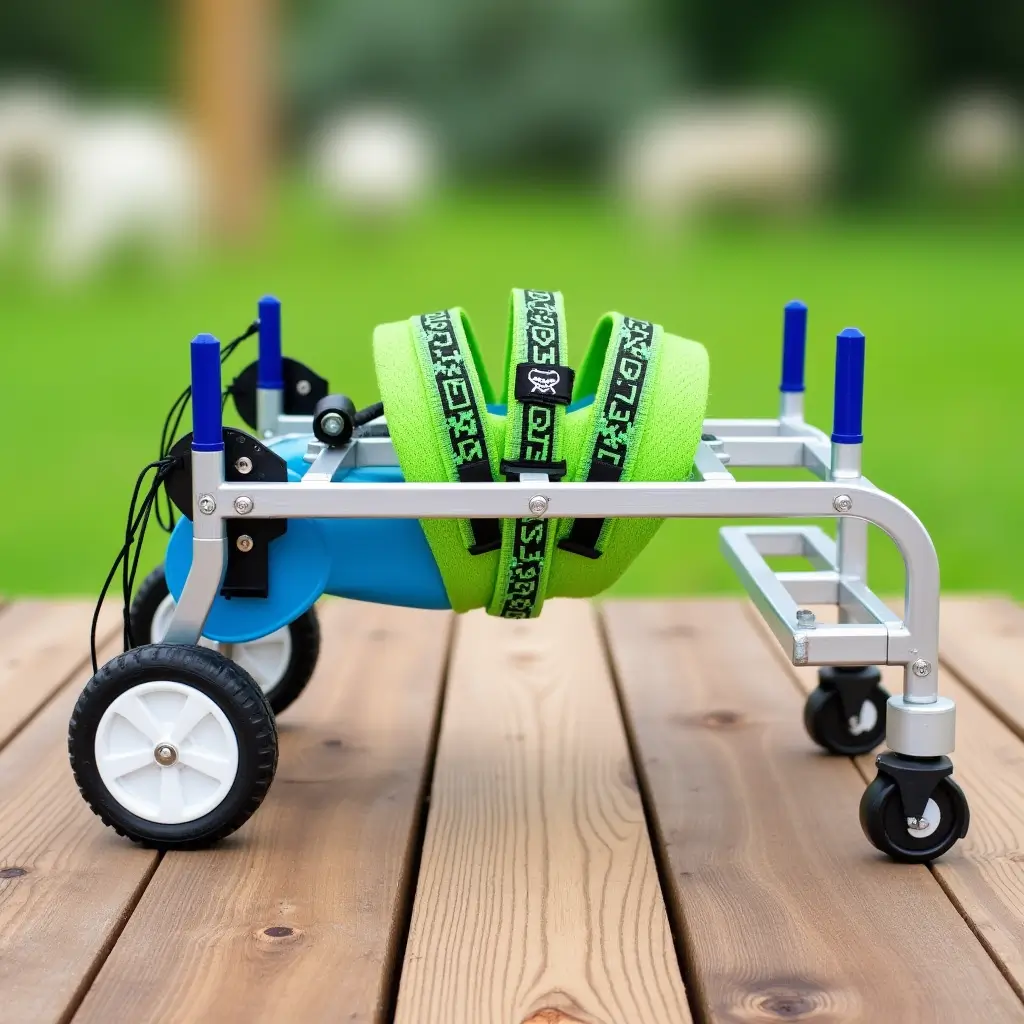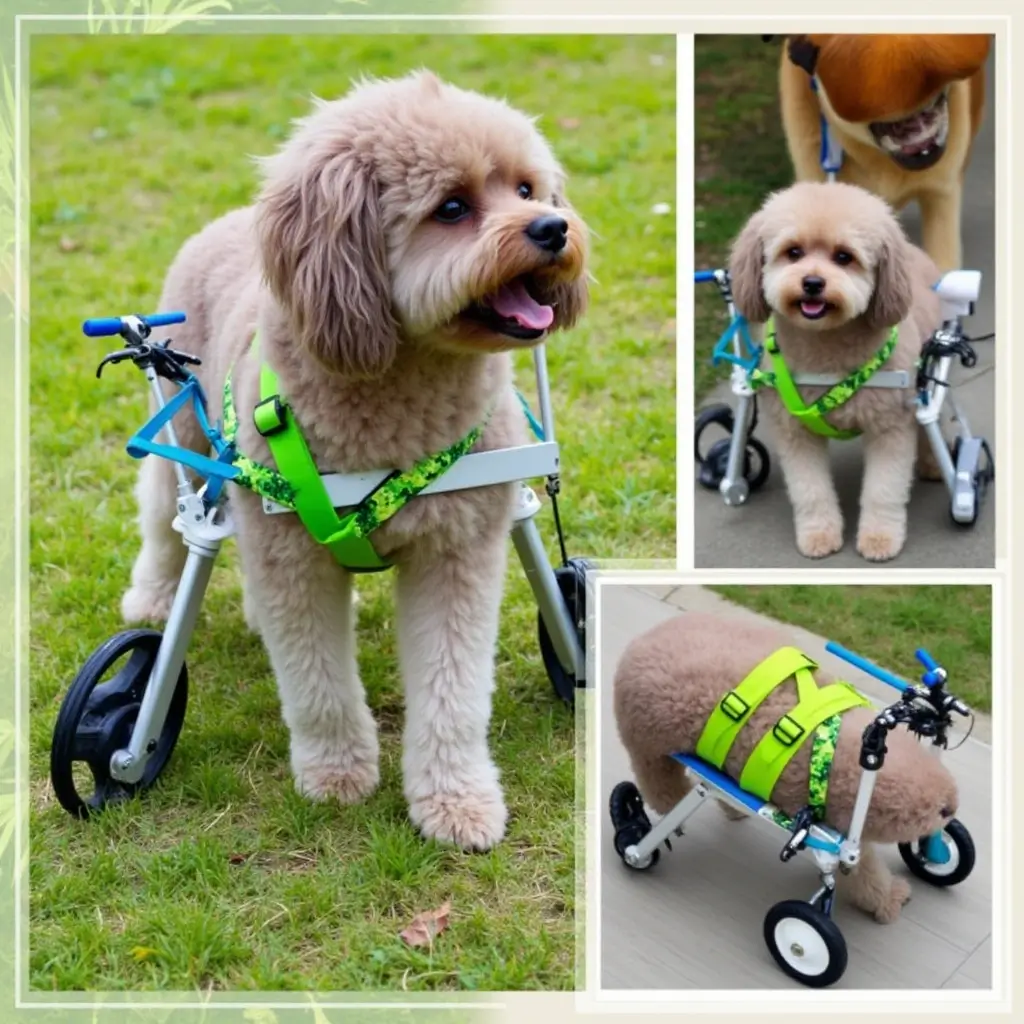Is your dog struggling with mobility due to paralysis or injury? Over 30% of disabled dogs thrive with a full support dog wheelchair – but safety is key to ensuring their comfort and happiness. In this guide, we’ll share six essential tips to help you choose the right wheelchair, avoid common mistakes, and create a smooth transition for your furry friend. Let’s turn mobility challenges into joyful adventures!
Table of Contents
What Is a Full Support Dog Wheelchair and How Does It Work?
A full support dog wheelchair is a 360° mobility aid designed for dogs with severe conditions like paralysis, IVDD, or hip dysplasia. It uses:
Adjustable Straps: Would help to secure your dog’s torso and hind legs comfortably.
Strong Frame: Usually constructed from aluminum or PVC for strength.
All Terrain: With four wheels, enabling it to travel smoothly on every kind of terrain.
This wheelchair shifts weight away from impaired or damaged limbs so your pup can walk freely using its front legs. It’s like a customized car for your pup, it helps support their body and, they drive!

6 Tips for Safe Mobility with a Full Support Dog Wheelchair
Tip 1: Make sure your measurements are member-oriented
A wheelchair that doesn’t fit properly can chafe or pinch. Follow these steps:
- Shoulder Width: Measure the broadest part of their chest.
- Leg Length: Distance from hip to paw (for wheel height).
- Weight: Ensure the wheelchair’s capacity exceeds your large dog wheelchair weight.
A large dog wheelchair for back legs are equipped with reinforced frames for large breeds.
Tip 2: Choose the Right Frame Material
- Aluminum: Ideal for active, outdoor dogs (durable but heavier).
- PVC: Lightweight for small breeds or indoor use.
Tip 3: Options for and Adjustability for Straps and Padding
- Seek padded harnesses to help reduce rubbing. Delicate adjustments allow you to adjust the fit as your dog’s needs evolve.
Tip 4: Get the Right Wheelchair for Your Dog’s Condition
- IVDD: With chest straps to full body support.
- Hip Dysplasia: Choose lightweight designs to ease joint pressure.
Tip 5: Test Out Wheels Custommade for Your Terrain
- Treaded Wheels: Ideal for grass, trails and other rough terrain.
- Smooth Wheels — Best on hardwood floors or sidewalks
Tip 6: Gradually Introduce the Wheelchair
Start with 10-minute sessions indoors. Use treats and praise to build positive associations. Most dogs adapt within 1–2 weeks!

Common Mistakes to Avoid with Full Support Dog Wheelchairs
- Skipping Professional Fitting: Not all DIY measurements translate well, resulting in pressure sores.
- Ignoring Weight Limits: Overloading can damage frames.
- Using the Wheelchair During Rest: Make sure to remove 4 wheel wheelchair for dogs while napping to avoid sores.
FAQs
Can a Full Support Dog Wheelchair Help with Paralysis?
Absolutely! It redistributes weight, allowing paralyzed dogs to move safely.
How Long Can My Dog Wear a Full Support Wheelchair Daily?
Start with 15-minute sessions, gradually increasing to 1–2 hours as they adapt.
Do Vets Recommend Full Support Wheelchairs?
Yes! Vets often recommend them for severe mobility issues.
How Expensive Is a Dog Wheelchair?
Prices range from
200-600$. Custom designs cost more but offer better safety.
Can a Dog Live a Happy Life in a Wheelchair?
100%! Dogs adapt quickly and regain their zest for life.
Conclusion
A full support dog wheelchair can transform your dog’s life , but safety starts with the right fit, material, and training. If you follow these six tips, you’ll make sure that your pup enjoys every walk, run and adventure. Ready to get started?
Read our guide on how to properly measure your dog for perfect fit!
